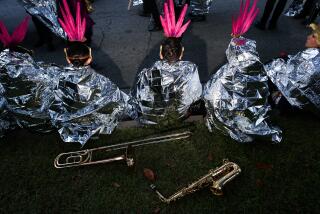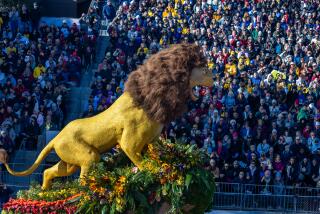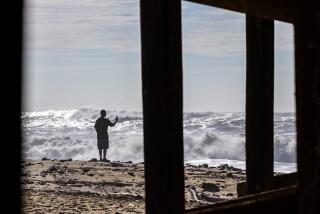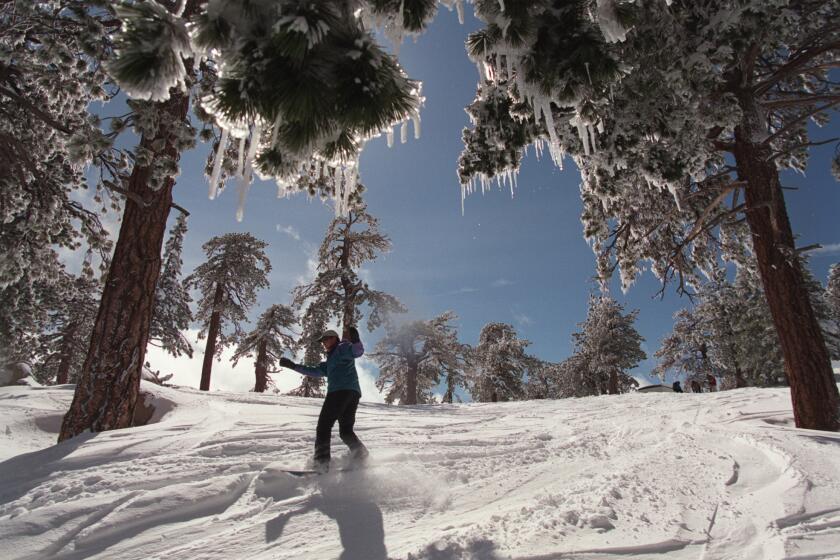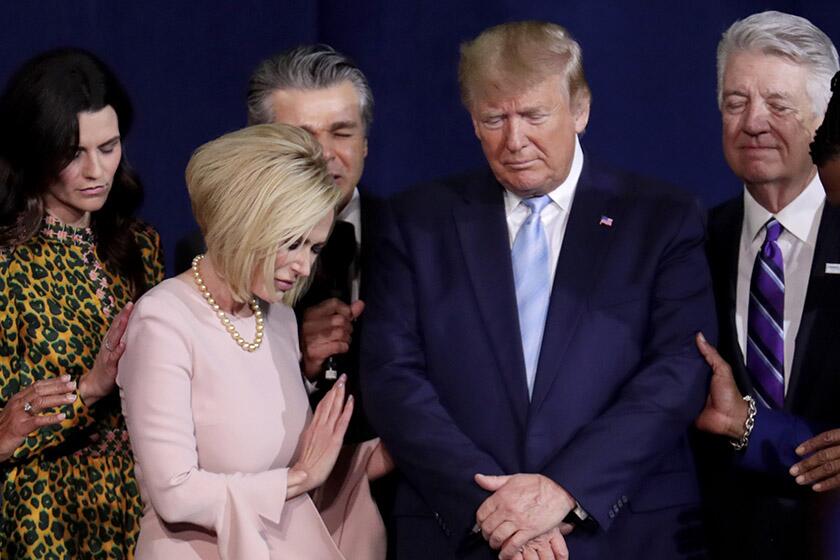Signs of a changing nation amid Rose Parade floats and bands
In the dark hours after the new year was rung in, hundreds of families had already staked out places along Colorado Avenue in Pasadena, camping out on the sidewalk through the chilly night. Some had propane heaters; some had barbecue grills fired up; some had set burn barrels aflame; most looked a bit daunted by the unusual Southern California cold.
Children were burrowed into blankets and sleeping bags. They huddled together along the curb or in the entryways of closed stores. Tipsy revelers rambled by, hooting and hollering, while the thump of music spilled out of neighborhood nightclubs. The kids looked more tired than happy, but their parents must have believed a little misery is a reasonable price for a front row seat at the annual Tournament of Roses Parade.
A couple hours after sunrise, my wife and I walked the four blocks from our warm apartment to the parade route and found a place to stand just behind the exhausted folks sitting on folding chairs and blankets who had lasted through the wee hours of the year’s first morning. Most of the people looked as if they might not have much money left for entertainment after monthly bills were paid; certainly not enough to buy tickets to the big game at the Rose Bowl. The parade – a decidedly antique form of fun in this digital age – had the virtue of being free.
The sun began to clear the tops of buildings, cutting the chill just as a police motorcycle unit weaved past to open the parade. Then came the mainstays: marching bands, floats, obscure dignitaries in vintage cars and people on horses, lots of horses.
Marching bands are venerable institutions that are wildly out of step with our hip-hop era. (By the way, I say this with great affection as a former high school horn player and son of a marching band director.) One after another, they blared their way down the street – from the imposing, solid ranks of a Marine band to the many rows of high school kids who pranced by in plumed hats and snazzy uniforms that could have been designed for Christmas nutcrackers.
Floats — those glorious anachronisms — were first invented for church processions in medieval times and are no less corny after a thousand years of artistic development. But there were surprises among the rolling flower arrangements. Along with the traditional sponsors of floats, such as the Lions Club, Kiwanis and the Odd Fellows and Rebekahs, there was a float celebrating ancient Armenia. Another float ferried men in turbans and beards with their wives and children crammed aboard. They were Sikhs; not a group that would have been found in Rose Parades of more distant decades. American patriotic tunes played from hidden speakers on the Sikhs’ rose-decorated contraption, a pointed reminder that, though some fools mistake them for terrorists, these Sikhs are Americans too.
It is no surprise to see floats honoring veterans, of course, but one this year paid tribute to the Japanese American vets who fought for the United States in World War II, even as their families back home were held in internment camps by the U.S. government.
The crowd along the route saved the biggest cheers for a marching band from Mexico and for a group of Mexican caballeros riding magnificent strutting horses. Half the crowd along the route appeared to be Latino – a percentage that ran even higher among those who spent the night waiting for the parade. Affection for the old homeland has not died in the hearts of California’s new majority demographic.
Midway through the parade, a line of L.A. County sheriff’s deputies rushed up to form a line along the sidewalk. A few of them waded into the crowd to get closer to a small group of protesters who had been hanging at the back waving signs decrying the deaths of young black men at the hands of police. Apparently, the deputies thought they were up to something. A police tactical unit in riot gear stood watch a block away. A later report said arrests were made.
At the tail end of the parade – following all the bands and floats and horses and big trucks – a squad of self-styled revolutionaries marched the route calling out for an end to Wall Street greed and the inequities of capitalism. Right behind them were police in squad cars and an armored assault vehicle. It wasn’t clear if the cops were monitoring the radicals or were just part of the show. In contrast, though, when several groups of evangelicals had walked the wrong way along the street just before the parade began, no one interfered as they hectored onlookers about their sins.
The Rose Parade may seem like a place to retreat to a prosaic American past, but not this year, at least. Race, religion, police tactics, the wealth gap, immigration – so many of the issues that dominate our current political debates found embodiment in the floats and faces of participants in the parade and among the people who camped out all night so they could watch it all roll by.
More to Read
A cure for the common opinion
Get thought-provoking perspectives with our weekly newsletter.
You may occasionally receive promotional content from the Los Angeles Times.
